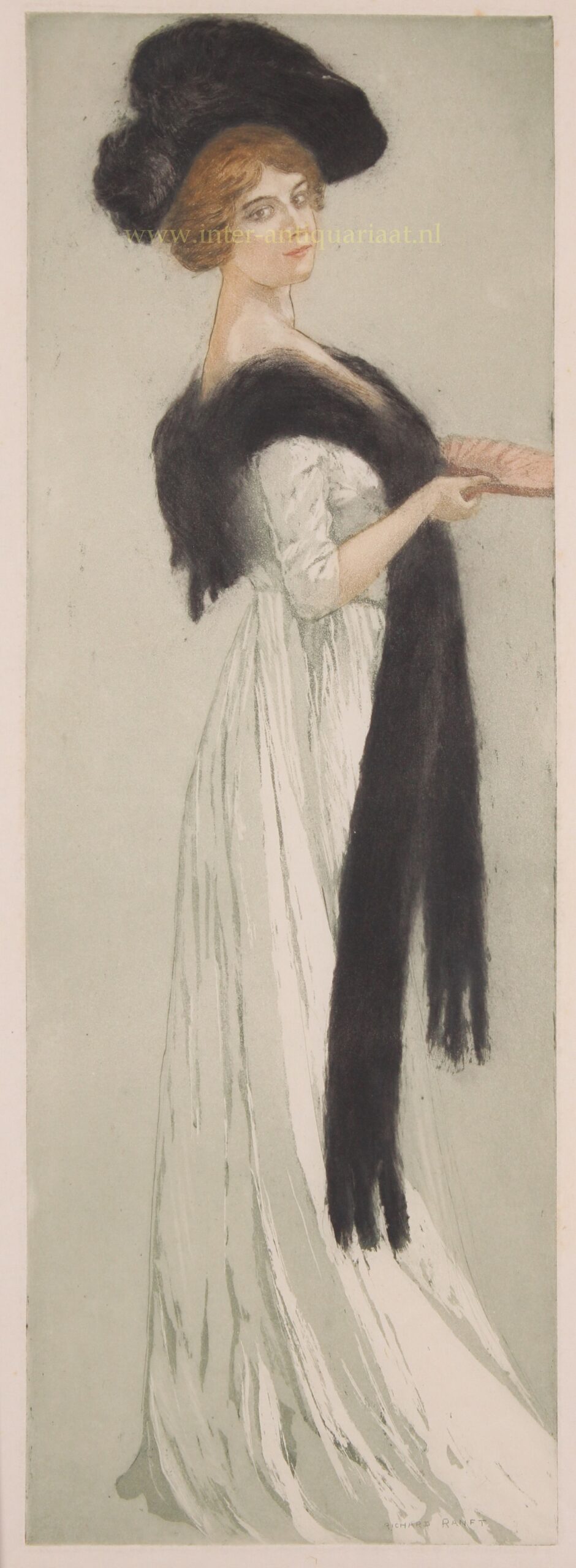Lady with a fan. Etching with aquatint in colours made by Richard Ranft around 1913. Signed in the plate lower right. Size: 48 x 17 cm.
While the first decade of the 20th century saw significant technological advancements, women’s fashion remained largely similar to the looks of the preceding century. At the beginning of the decade, the structured silhouette of the Gibson Girl was popular. Lace and other embellishments were essential. Modest dresses, bodies molded by corsets, and garish ornamentation dominated women’s fashion.
The 1910s began with a softer, more natural silhouette than the rigid S-shape that dominated the decade before, although in the earlier years, there was still an emphasis on the bust and a top-heavy look. The fabrics employed were linen (if you were poor), cotton, (if you were middle class) and silks and high grade cottons (if you were upper class).
In July 1914, the world was thrust into the “war to end all wars.” and fashion changed dramatically. Women began to work in munitions factories as part of the war effort and began to simple, utilitarian clothing made of cotton.
Richard Ranft (1862-1931) was a Swiss artist active in Paris who made posters and etchings (particularly in colours).
Price: SOLD


